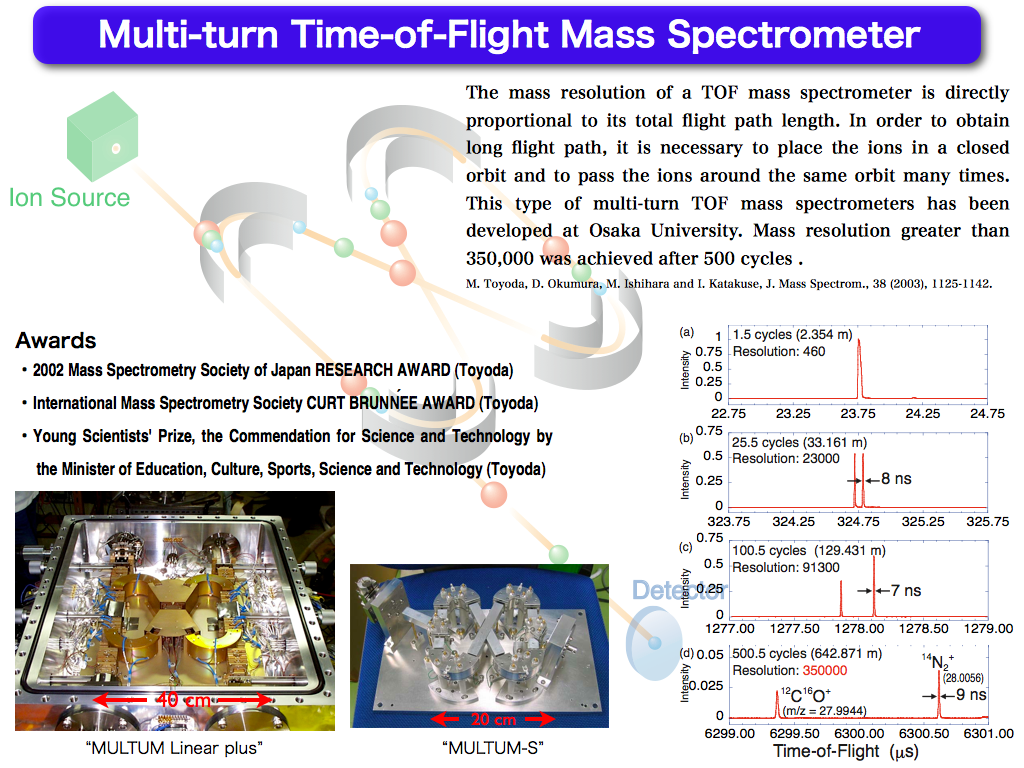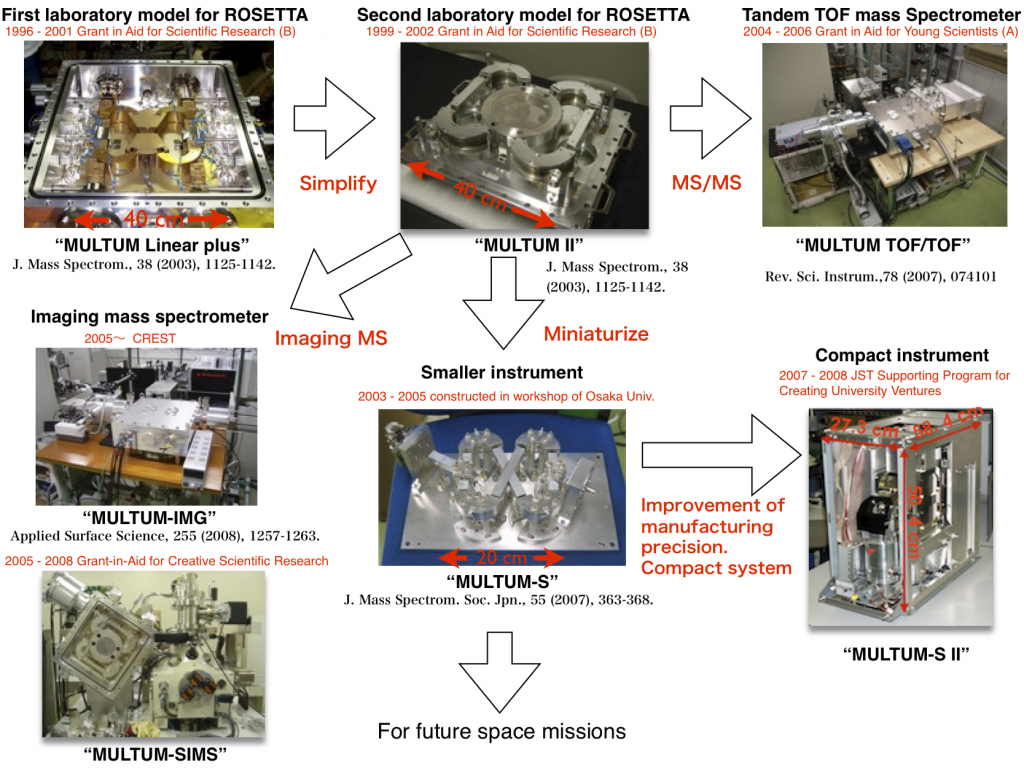Multi-turn Time-of-Flight Mass Spectrometer (MULTUM)
What is Multi-turn Time-of-Flight Mass Spectrometer
The mass resolution of a TOF mass spectrometer is directly proportional to its total flight path length. In order to obtain long flight path, it is necessary to place the ions in a closed orbit and to pass the ions around the same orbit many times. This type of multi-turn TOF mass spectrometers has been developed at Osaka University. Mass resolution greater than 350,000 was achieved after 500 cycles .


Cross-disciplinary research with MULTUM
Improvement of multi-turn time-of-flight mass spectrometer
We are developing technology to improve the performance and functionality of the multi-turn time-of-flight mass spectrometer. In particular, we are collaborating with KANOMAX Analytical, a venture company from our group, to develop technologies necessary for further miniaturization and weight reduction, as well as for combining with various ionization methods.
Recently, we have developed new control methods (Mass Spectrometry (Tokyo), 9 (2020), A0088., Mass Spectrometry (Tokyo), 10 (2021), A0098.) and mass calibration methods (Eur. J. Mass Spectrom., 23 (2017), 385-392) and an instrument that is combined with a medium-vacuum chemical ionization ion source (J. Mass Spectrom. Soc. Jpn., 69 (2021), 68-74.).
Continuous monitoring of greenhouse gases from soil
We are developing a system for continuous on-site measurements of biogenic gases such as CO2, N2O, and CH4 in soil. Gas chromatography (GC) is often used to measure multi-component gas species, but it is necessary to use the optimal detectors and pretreatment/separation conditions for each type of gas. Although it is possible to measure multiple gases simultaneously with a mass spectrometer, CO2 and N2O both have a mass number of 44, so it is difficult to measure them with low mass resolution such as a quadrupole mass spectrometer, which can be miniaturized. However, the MULTUM provides high mass resolution, then it is possible to separate and quantify these gases using only a mass spectrometer. Moreover, it is possible to take the system out to the field and perform continuous on-site measurements. This makes it possible to clarify the state of biological activity in soil, biological activity, and the movement of substances determined by soil structure from the behavior of multicomponent gases including soil biogenic gases.
Recently, we brought the MULTUM system to the farm of the Faculty of Agriculture, Ehime University, and succeeded in measuring gases generated from the soil for one to two weeks continuously (Atmos. Meas. Tech., 13 (2020), 6657 –6673.).
Development of on-site periodontal disease diagnosis method
Periodontal disease is a chronic inflammatory disease caused by the body response to bacterial biofilm, and is a frequently occurring disease that affects 80% of the population. It is the biggest cause of tooth loss in adults and is a risk factor for many systemic diseases such as diabetes and coronary artery disease. Our group has collected a small amount of gingival crevicular fluid from the oral cavity and searched for metabolites that could serve as markers using GC-MS. As a result, we have revealed that the amounts of several types of metabolites vary depending on the degree of inflammation, and that it is possible to diagnose periodontal disease using these metabolites as biomarkers (Mass Spectrom. (Tokyo), 5 (2016), A0047.).
A conventional GC-MS was used for this biomarker search. However, since it is impossible to use it in chair-side diagnosis, we aim to develop an on-site diagnosis system for periodontal disease using MULTUM.

